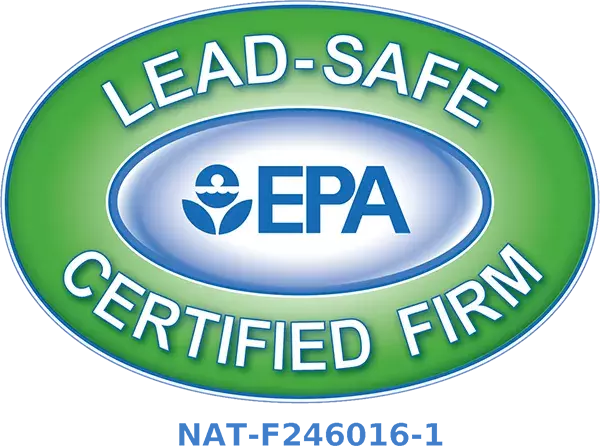As a property owner dealing with mold, you are likely asking: “How long does mold remediation take?” Understanding the timeframe for this critical process, which restores your property’s safety and preserves its structural integrity, is fundamental. In this blog, we shed light on the various factors and steps involved in the mold remediation process to provide a clearer picture of its duration.
Factors That Influence the Duration of Mold Remediation
When confronted with a mold infestation, it’s perfectly reasonable to wonder how long remediation might take. However, there’s no one-size-fits-all answer because various factors can influence the duration of the remediation process. Let’s look at these factors closely.
- Extent of Mold Infestation: The scope of the mold problem plays a significant role in determining the length of remediation. A small infestation confined to one area of a property will require less time than a mold problem that has spread across multiple rooms or deeply penetrated building materials.
- Type of Mold Present: Various types of mold infect properties, each with unique characteristics. Some types of mold are more stubborn or hazardous and might necessitate a longer more intensive remediation process.
- Size of the Property: Naturally, a larger property with extensive mold infestation will require a longer remediation process compared to a smaller property with the same level of mold growth.
- Weather Conditions: Damp and humid weather conditions can slow down the drying process—an integral part of mold remediation—thereby lengthening the overall project time.
Accurate determination of these factors often requires professional inspection, expertise, and equipment. This is why relying on professional mold remediation services is crucial, as these experts can provide a more precise timeline for your specific case.
Process of Mold Remediation and Time Taken for Each Step
Mold remediation is a systematic process with several distinct and crucial steps. Understanding this process and the time taken for each phase can further elucidate why the remediation timeline can differ from case to case.
- Inspection and Testing: The remediation process starts with a thorough property inspection to assess the mold’s location and extent. From visual checks to moisture detection and air sampling, professionals use various methods to understand the mold situation deeply. This phase generally takes a few hours to a day or longer, depending on the property size and infestation complexity.
- Containment: The next step is containment, which involves isolating the affected areas to prevent the spread of mold. The time taken for this step largely depends on the infestation size, but it could range from a few hours to a day.
- Removal and Cleaning: Following containment, professionals proceed with the bulk of the remediation — the actual removal and cleaning of mold infestations. This process can be labor-intensive and time-consuming, potentially taking several days to weeks, depending on the infestation’s severity.
- Restoration: The final step involves restoration, which could mean repairing and restoring areas damaged during remediation. The duration of restoration varies based on the extent of damages and repairs needed, potentially taking another few days to weeks.
While this provides a general guideline for the mold remediation process, remember that real-life scenarios can be quite fluid. Each property and mold infestation is unique, and unexpected challenges can sometimes arise and influence the timeline.
When Can You Return to Your Property?
The question that logically arises after understanding the remediation process is – when is it deemed safe to return to your property? While it’s natural to want to get back to normal life as soon as possible, it’s important not to rush this process.
Reoccupancy generally depends on the success of the remediation process and the completion of repairs, if necessary. Professionals will determine when all mold-infected materials have been either cleaned or discarded, and the indoor moisture levels are back to normal. After these checks are complete, and your property passes a final inspection, it is usually safe to return to the premises. This may take anywhere from a few days to a few weeks from the start of the mold remediation process.
However, it’s crucial to bear in mind some precautions even after returning. Keep an eye out for any signs of recurring mold, such as visible growth, damp patches, or a musty smell. Ensuring proper ventilation, monitoring property moisture levels, and regularly cleaning susceptible areas can go a long way in preventing future mold growth.
Why It Is Crucial Not to Delay Mold Remediation
The importance of acting quickly when faced with a mold situation cannot be overstated. From potential health hazards to structural property damage, the implications of delaying mold remediation can be severe.
Health-wise, prolonged exposure to mold spores could lead to a range of issues. These can be as mild as allergies or as severe as respiratory conditions, particularly in individuals with existing respiratory problems, young children, and the elderly. Symptoms can include constant sneezing, coughing, headaches, and chronic fatigue.
In terms of property damage, mold is relentless. Left unchecked, it can invade and weaken the structure of your property, gradually eating away at the materials — be it wood, drywall, or even certain types of concrete and insulation. Eventually, this could lead to extensive property damage that requires considerable time, effort, and money to repair.
In all, delaying mold remediation is akin to inviting more trouble. Prompt action not only reduces potential long-term damages and costly repairs, but it also minimizes health risks to you and your family. So, should you find yourself facing mold infestation, remember – time is of the essence.
Struggling with a mold infestation?
Contact us at J&R Restoration as soon as possible. Remember, the longer you wait, the worse it will get and the longer it will take.


